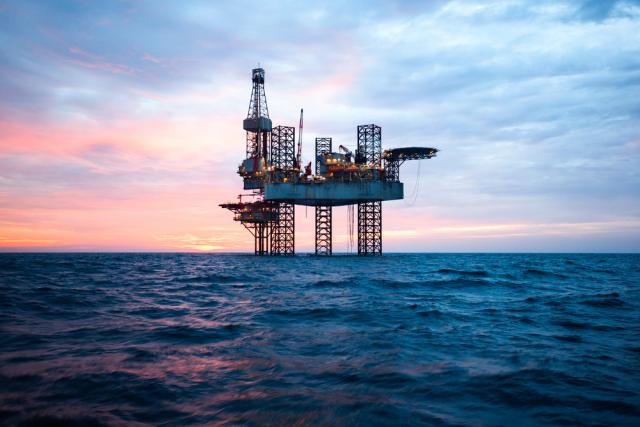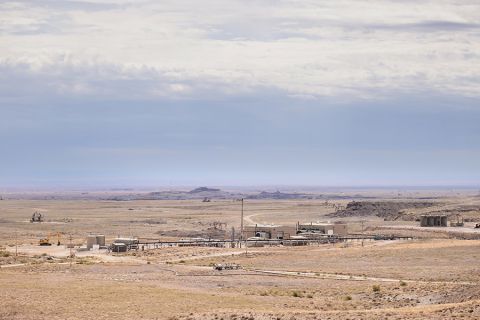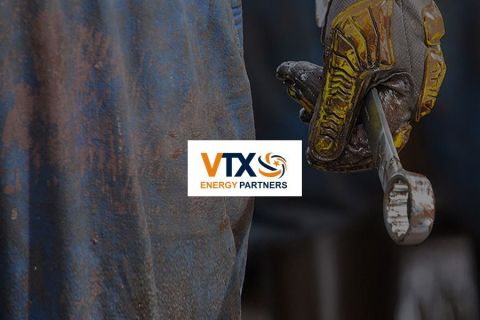
The Department of the Interior (DOI) announced revisions to the 2019 Well Control Rule that will enhance worker safety on offshore oil and gas operations in the Outer Continental Shelf, the agency said Aug. 22. (Source: Shutterstock.com)
The Department of the Interior (DOI) announced revisions to the 2019 Well Control Rule that will enhance worker safety on offshore oil and gas operations in the Outer Continental Shelf, the agency said Aug. 22.
“Finalizing this rule will enable BSEE [the Bureau of Safety and Environmental Enforcement] to continue to put the lives and livelihoods of workers first, as well as the protection of our waters and marine habitats,” BSEE Director Kevin Sligh said in a press release. “This rule strengthens testing and performance requirements for blowout preventers and other well control equipment, provides for timely and robust analyses and investigations into failures, and clarifies reporting requirements to ensure we have appropriate visibility over information and data critical to maintaining well integrity.”
The final well control rule from BSEE builds upon the reforms made by the DOI following the 2010 Deepwater Horizon explosion.
In the immediate aftermath of the incident, BSEE adopted several recommendations from investigation teams to improve the safety of offshore energy operations, which led to the 2016 Well Control Rule. In May 2019, BSEE published a final rule that weakened certain safety provisions.
The final rule incorporates lessons learned from operator experience and blowout preventer (BOP) incident data that revises certain modifications from the 2019 rule.
The Department has finalized revisions that will require BOPs to be able to always close and seal the wellbore to the well’s maximum anticipated surface pressure and require operators to provide BOP test results to BSEE within 72 hours after completion if BSEE is unable to witness testing. Surface BOPs on existing floating facilities must also follow the dual shear ram requirements when replacing an entire BOP stack. And ROVs will be required to be capable of opening and closing each shear ram on a BOP.
Other requirements include requiring failure analysis and investigations to start within 90 days of an incident and ensuring that data is reported to both BSEE and a designated third party. The third party’s qualifications must be submitted to BSEE with associated permit applications.
Recommended Reading
Comstock: Monster Western Haynesville Wildcats Cost $30MM-plus
2024-10-31 - Comstock Resources is flowing back a 13th well currently in the play where the oldest has made 2.2 Bcf per 1,000 lateral feet to date in its first 29 months online.
Now, the Uinta: Drillers are Taking Utah’s Oily Stacked Pay Horizontal, at Last
2024-10-04 - Recently unconstrained by new rail capacity, operators are now putting laterals into the oily, western side of this long-producing basin that comes with little associated gas and little water, making it compete with the Permian Basin.
SM, Crescent Testing New Benches in Oily, Stacked Uinta Basin
2024-11-05 - The operators are landing laterals in zones in the estimated 17 stacked benches in addition to the traditional Uteland Butte.
VTX Energy Quickly Ramps to 42,000 bbl/d in Southern Delaware Basin
2024-09-24 - VTX Energy’s founder was previously among the leadership that built and sold an adjacent southern Delaware operator, Brigham Resources, for $2.6 billion.
Coterra Takes Harkey Sand ‘Row’ Show on the Road
2024-11-20 - With success to date in Harkey sandstone overlying the Wolfcamp, the company aims to make mega-DSUs in New Mexico with the 49,000-net-acre bolt-on of adjacent sections.
Comments
Add new comment
This conversation is moderated according to Hart Energy community rules. Please read the rules before joining the discussion. If you’re experiencing any technical problems, please contact our customer care team.





